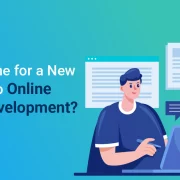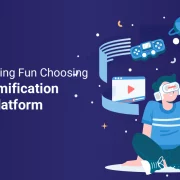
Federal Compliance and Cloud Infrastructure: US IT Compliance Trends for 2025
Summary
This blog covers compliance for cloud security in 2025, focusing on HIPAA, SOC 2, GDPR, CCPA, and PCI DSS, with strategies for risk assessment and security controls.
The cloud has totally transformed the way businesses function. It provides flexibility and scalability to an unprecedented extent. But with this freedom in the digital world comes a price—the labyrinth of US federal IT compliance regulations.
Even the most tech-savvy firms find it intimidating since regulations, including GDPR and HIPAA, are always changing. Knowing the main compliance factors that will influence your cloud strategy is more important than ever as 2025 draws near.
This post will discuss the laws that will affect your company the most and offer doable tactics to guarantee and sustain compliance over time. Read on!
Table of Contents:
- Top Compliance Considerations for Cloud Infrastructure Security in 2025
- How to Achieve Cloud Compliance?
- To Wrap Up
Top Compliance Considerations for Cloud Infrastructure Security in 2025
Compliance violations can be very devastating for US businesses in terms of finance. Non-compliance results in an average loss of 14.82 million dollars annually.
This emphasizes the necessity of cloud security as a service and great cloud compliance strategies.
Some top compliance considerations for cloud infrastructures in 2025 are:
1. HIPAA Compliance for Cloud Storage of Medical Data
The federal law that safeguards personally identifiable health information is known as the Health Insurance Portability and Accountability Act, or HIPAA.
In compliance with HIPAA regulations, your business will be liable for any medical data kept on cloud servers. Your cloud service provider has implemented the necessary security measures to protect the PHI, as you are undoubtedly aware.
2. SOC 2 Compliance for Cloud Security Solutions
The Service Organization Controls, SOC 2, is the framework of the auditing standards applied to test a service organization’s relevant security controls.
Practically speaking, most businesses that have a cloud provider practice using it if it demonstrates SOC 2 compliance; this way, they ensure that that particular cloud provider also has a suitable security program that would protect their client’s data.
3. GDPR Compliance for Cloud Data Residency
The General Data Protection Regulation was promulgated into law by the European Union to apply to every form of processing of personal data.
Ensure that your data is processed in accordance with the General Data Protection Regulation if your business stores in the cloud any data from citizens of the European Union. One of such criterion is that you have to ensure that your data is being kept in a cloud that is located in a place that conforms with the law.
4. Consumer Privacy Rights under the CCPA
The rights of California consumers in reference to personal information are in the California Consumer Privacy Act or CCPA. Your business must comply with those laws since it operates in California, getting data from the citizens. That means it would grant permission to Californian residents to Access, delete, or opt out of their information being sold.
5. Compliance with PCI DSS for Processing Cloud Payments
A collection of security guidelines called the Payment Card Industry Data Security Standard, or PCI DSS, is intended to safeguard cardholder information.
PCI DSS regulations, which make sure cloud providers have security procedures in place to secure cardholder data, must be followed if your company accepts online payments.
Also Read: Best Practices for Cloud-Managed Services Compliance
How to Achieve Cloud Compliance?
With proactive compliance with the requirements and strong security measures, organizations can reduce exposure to such massive risks and protect their valuable data. Thus, the organization can maintain a strong competitive advantage.
Achieving and maintaining cloud security compliance requires a proactive and strategic approach using cloud security best practices.
Here are some key steps to consider:
1. Conduct a Comprehensive Risk Assessment
Identify and assess your compliance risks for your cloud environment. This involves assessing data sensitivity, regulatory requirements, and your cloud provider’s security posture.
Also, be sure to assess any possible risks and vulnerabilities unique to your area and sector. You can prioritize tasks and choose security controls and compliance measures more wisely if you are aware of these threats.
2. Develop a Comprehensive Compliance Framework
This is simply a well-articulated set of policies, procedures, and controls that should reflect all identified compliance requirements. In this regard, such a framework should have the areas of data security, access control, incident response, and data privacy.
3. Select a Compliant Cloud Provider
A cloud provider should have a good history of security and a commitment to compliance. Look for providers with SOC 2, ISO 27001, and FedRAMP certifications.
4. Implement Robust Security Controls
Implement and maintain robust security controls in your cloud environment. Examples include encryption, access controls, intrusion detection systems, and regular security audits.
5. Monitor and Update
Regularly monitor your cloud environment for security threats and compliance violations. Periodically review and revise your compliance program to address dynamic threats and changing regulations.
Also Read: 5 Tips to Balance Compliance and Website Usability
To Wrap Up
Cloud compliance is a pretty complex issue, but for most businesses depending on cloud infrastructure, this is one thing that really matters. Top compliance considerations and a good cloud compliance service provider would ensure compliance with federal IT regulations.
If you’re looking for expert assistance in cloud governance and compliance, Hurix Digital is here to help. Our experts focus on helping companies adhere to cloud security guidelines while protecting private data, so your company will always be safe and in compliance. Feel free to get in touch with our team for further information.

Vice President and Strategic Business Unit Head – Cloud Services
A top technology management voice on LinkedIn with 20 Years of experience in Information Technology, Cloud Services, Digital Transformation, Application Modernisation, Managed Services, IT Security Engineering and Operations Management. An avid technology Leader, Leadership Speaker, Author & Coach.







